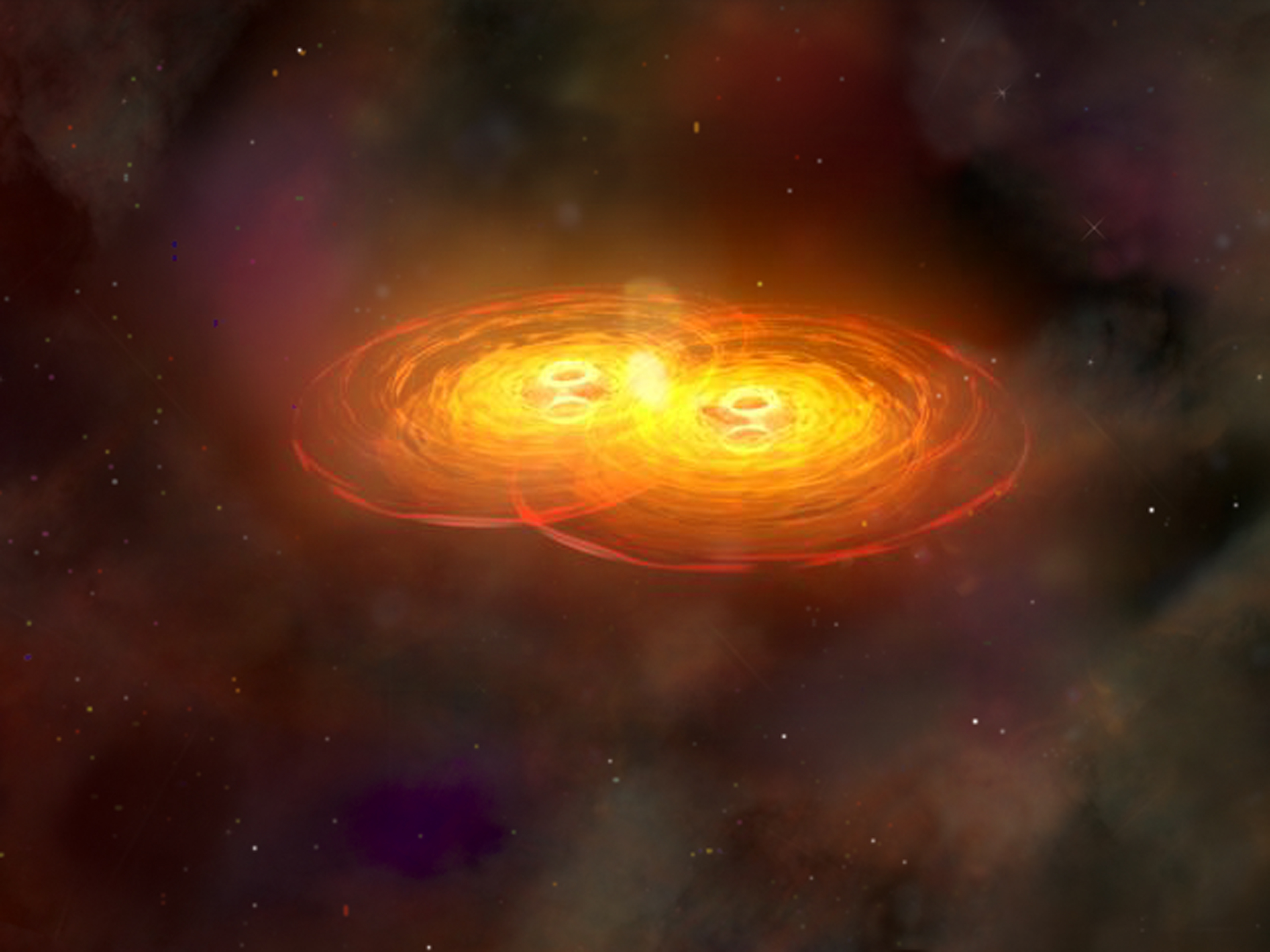|
Nonperturbative
In mathematics and physics, a non-perturbative function (mathematics), function or process is one that cannot be described by perturbation theory. An example is the function : f(x) = e^, which does not have a Taylor series at ''x'' = 0. Every coefficient of the Taylor expansion around ''x'' = 0 is exactly zero, but the function is non-zero if ''x'' ≠ 0. In physics, such functions arise for phenomena which are impossible to understand by perturbation theory, at any finite order. In quantum field theory, 't Hooft–Polyakov monopoles, domain walls, flux tubes, and instantons are examples. A concrete, physical example is given by the Schwinger effect, whereby a strong electric field may spontaneously decay into electron-positron pairs. For not too strong fields, the rate per unit volume of this process is given by, : \Gamma = \frac \mathrm^ which cannot be expanded in a Taylor series in the electric charge e, or the electric field strength E. Here m is the mass of an electron ... [...More Info...] [...Related Items...] OR: [Wikipedia] [Google] [Baidu] |
Instanton
An instanton (or pseudoparticle) is a notion appearing in theoretical and mathematical physics. An instanton is a classical solution to equations of motion with a finite, non-zero action, either in quantum mechanics or in quantum field theory. More precisely, it is a solution to the equations of motion of the classical field theory on a Euclidean spacetime. In such quantum theories, solutions to the equations of motion may be thought of as critical points of the action. The critical points of the action may be local maxima of the action, local minima, or saddle points. Instantons are important in quantum field theory because: * they appear in the path integral as the leading quantum corrections to the classical behavior of a system, and * they can be used to study the tunneling behavior in various systems such as a Yang–Mills theory. Relevant to dynamics, families of instantons permit that instantons, i.e. different critical points of the equation of motion, be related ... [...More Info...] [...Related Items...] OR: [Wikipedia] [Google] [Baidu] |
Instanton
An instanton (or pseudoparticle) is a notion appearing in theoretical and mathematical physics. An instanton is a classical solution to equations of motion with a finite, non-zero action, either in quantum mechanics or in quantum field theory. More precisely, it is a solution to the equations of motion of the classical field theory on a Euclidean spacetime. In such quantum theories, solutions to the equations of motion may be thought of as critical points of the action. The critical points of the action may be local maxima of the action, local minima, or saddle points. Instantons are important in quantum field theory because: * they appear in the path integral as the leading quantum corrections to the classical behavior of a system, and * they can be used to study the tunneling behavior in various systems such as a Yang–Mills theory. Relevant to dynamics, families of instantons permit that instantons, i.e. different critical points of the equation of motion, be related ... [...More Info...] [...Related Items...] OR: [Wikipedia] [Google] [Baidu] |
Schwinger Effect
The Schwinger effect is a predicted physical phenomenon whereby matter is created by a strong electric field. It is also referred to as the Sauter–Schwinger effect, Schwinger mechanism, or Schwinger pair production. It is a prediction of quantum electrodynamics (QED) in which electron– positron pairs are spontaneously created in the presence of an electric field, thereby causing the decay of the electric field. The effect was originally proposed by Fritz Sauter in 1931 and further important work was carried out by Werner Heisenberg and Hans Heinrich Euler in 1936, though it was not until 1951 that Julian Schwinger gave a complete theoretical description. The Schwinger effect can be thought of as vacuum decay in the presence of an electric field. Although the notion of vacuum decay suggests that something is created out of nothing, physical conservation laws are nevertheless obeyed. To understand this, note that electrons and positrons are each other's antiparticles, with iden ... [...More Info...] [...Related Items...] OR: [Wikipedia] [Google] [Baidu] |
Loop Quantum Gravity
Loop quantum gravity (LQG) is a theory of quantum gravity, which aims to merge quantum mechanics and general relativity, incorporating matter of the Standard Model into the framework established for the pure quantum gravity case. It is an attempt to develop a quantum theory of gravity based directly on Einstein's geometric formulation rather than the treatment of gravity as a force. As a theory LQG postulates that the structure of Spacetime, space and time is composed of finite loops woven into an extremely fine fabric or network. These networks of loops are called spin networks. The evolution of a spin network, or spin foam, has a scale above the order of a Planck length, approximately 10−35 meters, and smaller scales are meaningless. Consequently, not just matter, but space itself, prefers an atomic hypothesis, atomic structure. The areas of research, which involves about 30 research groups worldwide, share the basic physical assumptions and the mathematical description of q ... [...More Info...] [...Related Items...] OR: [Wikipedia] [Google] [Baidu] |
Lattice QCD
Lattice QCD is a well-established non-perturbative approach to solving the quantum chromodynamics (QCD) theory of quarks and gluons. It is a lattice gauge theory formulated on a grid or lattice of points in space and time. When the size of the lattice is taken infinitely large and its sites infinitesimally close to each other, the continuum QCD is recovered. Analytic or perturbative solutions in low-energy QCD are hard or impossible to obtain due to the highly nonlinear nature of the strong force and the large coupling constant at low energies. This formulation of QCD in discrete rather than continuous spacetime naturally introduces a momentum cut-off at the order 1/''a'', where ''a'' is the lattice spacing, which regularizes the theory. As a result, lattice QCD is mathematically well-defined. Most importantly, lattice QCD provides a framework for investigation of non-perturbative phenomena such as confinement and quark–gluon plasma formation, which are intractable by means of a ... [...More Info...] [...Related Items...] OR: [Wikipedia] [Google] [Baidu] |
Conformal Bootstrap
The conformal bootstrap is a non-perturbative mathematical method to constrain and solve Conformal field theory, conformal field theories, i.e. models of particle physics or statistical physics that exhibit similar properties at different levels of resolution. Overview Unlike more traditional techniques of quantum field theory, conformal bootstrap does not use the Lagrangian (field theory), Lagrangian of the theory. Instead, it operates with the general axiomatic parameters, such as the scaling dimensions of the local operators and their operator product expansion coefficients. A key axiom is that the product of local operators must be expressible as a sum over local operators (thus turning the product into an algebra over a field, algebra); the sum must have a non-zero radius of convergence. This leads to decompositions of correlation functions into structure constants and Virasoro conformal block, conformal blocks. The main ideas of the conformal bootstrap were formulated in the ... [...More Info...] [...Related Items...] OR: [Wikipedia] [Google] [Baidu] |
Operator Product Expansion
In quantum field theory, the operator product expansion (OPE) is used as an axiom to define the product of fields as a sum over the same fields. As an axiom, it offers a non-perturbative approach to quantum field theory. One example is the vertex operator algebra, which has been used to construct two-dimensional conformal field theories. Whether this result can be extended to QFT in general, thus resolving many of the difficulties of a perturbative approach, remains an open research question. In practical calculations, such as those needed for scattering amplitudes in various collider experiments, the operator product expansion is used in QCD sum rules to combine results from both perturbative and non-perturbative (condensate) calculations. 2D Euclidean quantum field theory In 2D Euclidean field theory, the operator product expansion is a Laurent series expansion associated to two operators. A Laurent series is a generalization of the Taylor series in that finitely many po ... [...More Info...] [...Related Items...] OR: [Wikipedia] [Google] [Baidu] |
BCFW Recursion
The Britto–Cachazo–Feng–Witten recursion relations are a set of on-shell recursion relations in quantum field theory. They are named for their creators, Ruth Britto, Freddy Cachazo, Bo Feng and Edward Witten. The BCFW recursion method is a way of calculating scattering amplitude In quantum physics, the scattering amplitude is the probability amplitude of the outgoing spherical wave relative to the incoming plane wave in a stationary-state scattering process. [...More Info...] [...Related Items...] OR: [Wikipedia] [Google] [Baidu] |
Sphaleron
A sphaleron ( el, σφαλερός "slippery") is a static (time-independent) solution to the electroweak field equations of the Standard Model of particle physics, and is involved in certain hypothetical processes that violate baryon and lepton numbers. Such processes cannot be represented by perturbative methods such as Feynman diagrams, and are therefore called non-perturbative. Geometrically, a sphaleron is a saddle point of the electroweak potential (in infinite-dimensional field space). This saddle point rests at the top of a barrier between two different low-energy equilibria of a given system; the two equilibria are labeled with two different baryon numbers. One of the equilibria might consist of three baryons; the other, alternative, equilibrium for the same system might consist of three antileptons. In order to cross this barrier and change the baryon number, a system must either tunnel through the barrier (in which case the transition is an instanton-like process) or m ... [...More Info...] [...Related Items...] OR: [Wikipedia] [Google] [Baidu] |
Soliton
In mathematics and physics, a soliton or solitary wave is a self-reinforcing wave packet that maintains its shape while it propagates at a constant velocity. Solitons are caused by a cancellation of nonlinear and dispersive effects in the medium. (Dispersive effects are a property of certain systems where the speed of a wave depends on its frequency.) Solitons are the solutions of a widespread class of weakly nonlinear dispersive partial differential equations describing physical systems. The soliton phenomenon was first described in 1834 by John Scott Russell (1808–1882) who observed a solitary wave in the Union Canal in Scotland. He reproduced the phenomenon in a wave tank and named it the " Wave of Translation". Definition A single, consensus definition of a soliton is difficult to find. ascribe three properties to solitons: # They are of permanent form; # They are localized within a region; # They can interact with other solitons, and emerge from the collision unchan ... [...More Info...] [...Related Items...] OR: [Wikipedia] [Google] [Baidu] |
Nonperturbative Vacuum
In mathematics and physics, a non-perturbative function or process is one that cannot be described by perturbation theory. An example is the function : f(x) = e^, which does not have a Taylor series at ''x'' = 0. Every coefficient of the Taylor expansion around ''x'' = 0 is exactly zero, but the function is non-zero if ''x'' ≠ 0. In physics, such functions arise for phenomena which are impossible to understand by perturbation theory, at any finite order. In quantum field theory, 't Hooft–Polyakov monopoles, domain walls, flux tubes, and instantons are examples. A concrete, physical example is given by the Schwinger effect, whereby a strong electric field may spontaneously decay into electron-positron pairs. For not too strong fields, the rate per unit volume of this process is given by, : \Gamma = \frac \mathrm^ which cannot be expanded in a Taylor series in the electric charge e, or the electric field strength E. Here m is the mass of an electron and we have used units ... [...More Info...] [...Related Items...] OR: [Wikipedia] [Google] [Baidu] |

